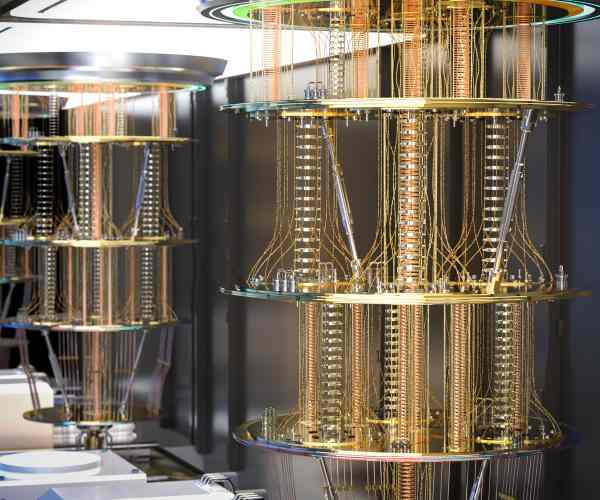Imagine a world where your phone doesn’t just respond to your commands but anticipates your needs. Where your home isn’t just connected but intuitively understands your preferences, adjusting lighting and temperature before you even realize you want it. This isn’t a scene from a sci-fi movie; it’s becoming our reality, thanks to AI chips developed by companies like Nvidia and Google. These chips are transforming our devices from passive tools to active assistants, capable of understanding and interacting with the world in ways previously imagined only in fiction.
Over the last few years, there’s been a significant surge in AI chip development by both tech giants and nimble startups. This shift towards specialized hardware for artificial intelligence, including GPUs (Graphics Processing Units) and TPUs (Tensor Processing Units), is driven by the burgeoning demands of machine learning models and applications. These chips are designed to handle the complex computations required for AI at speeds and efficiencies that general-purpose chips can’t match.
The essence of AI chips lies in their ability to significantly enhance the energy efficiency, performance, and capabilities of devices across a myriad of sectors, from healthcare to consumer electronics. This isn’t just about making our gadgets faster or longer-lasting; it’s about enabling a new wave of smart applications that can learn from and adapt to their environment, creating more personalized and engaging experiences.

The Heart of Innovation: Why AI Chips Are the Future
AI chips are a breed apart from general-purpose chips like CPUs (Central Processing Units) that have powered computers for decades. These specialized chips are engineered for parallel processing, allowing them to handle multiple tasks simultaneously, a critical requirement for running complex neural networks and accelerating machine learning tasks. This architectural difference makes AI chips exponentially faster and more efficient for AI applications, from voice recognition to real-time data analysis.
The pivot to custom AI chips has been partly spurred by Nvidia’s groundbreaking success with GPUs, initially designed for rendering video games but now at the forefront of AI processing. Nvidia’s GPUs have demonstrated a remarkable ability to process large language models and complex algorithms efficiently, providing a significant competitive advantage in the race to develop sophisticated AI technologies. This has not only opened new avenues for AI applications but also set a benchmark for what’s possible with specialized hardware.
The impact of AI chips is already tangible in our everyday lives. For instance, smartphones equipped with AI chips can now offer real-time translation, enhanced photography features, and personalized voice assistants, all while improving battery life and performance. In smart homes, these chips enable devices to learn from user behavior, automating routines like adjusting thermostats or turning off lights, thereby enhancing energy efficiency and user convenience.
In the realm of data centers, companies like Google have deployed AI chips to improve the efficiency of their vast computing resources. Google’s TPUs, for instance, are custom-designed to accelerate machine learning workloads, enabling faster and more energy-efficient processing of data. This not only reduces the environmental impact of these data centers but also allows for more complex AI tasks to be undertaken, powering everything from search algorithms to content recommendations.
The Role of AI Chips in Everyday Technology
AI chips, such as those developed by Apple and Qualcomm, are silently powering a revolution in consumer technology, making devices smarter, more efficient, and increasingly intuitive. By integrating AI chips into smartphones and home devices, manufacturers have unlocked new levels of user experience—better battery life, faster data processing, and advanced features like image recognition and real-time language translation.
Smartphones, for example, have seen remarkable improvements in functionality and efficiency. The Apple A12 Bionic chip, with its dedicated neural engine, allows for unparalleled image processing and augmented reality experiences, boosting the iPhone’s computational capabilities without sacrificing battery life. Similarly, Qualcomm’s Snapdragon processors come equipped with AI capabilities that enhance everything from photography to voice recognition, making Android devices more personalized and responsive.
Home devices have not been left behind. AI chips enable smart speakers and home assistants to understand and anticipate user preferences, automate tasks, and even control other smart devices within the ecosystem, making everyday life more convenient and efficient.
Personal Stories of Transformation
Take, for example, John, a graphic designer who found his workflow dramatically improved by his smartphone’s AI-powered camera, which automatically adjusts settings for the perfect shot, saving him time and effort in post-production. Or Mary, whose smart thermostat, powered by an AI chip, learned her family’s routine, reducing her monthly energy bill by 20%.
The Big Players and the Startups: A Dynamic Landscape
The AI chip market is a battleground for both established tech giants like Nvidia, Intel, and Google and innovative startups that are breaking new ground. These companies are at the forefront of addressing the semiconductor industry’s significant supply chain challenges. Amidst increasing demand, the United States and Taiwan Semiconductor Manufacturing (TSMC) are pivotal in meeting global needs, with TSMC leading efforts in advanced semiconductor manufacturing.
Partnership Models Driving Innovation
The collaboration between tech behemoths and agile startups has been instrumental in driving innovation and the development of more efficient and powerful AI chips. For instance, Nvidia’s partnerships with smaller tech companies have been crucial in refining GPU capabilities for AI applications, while Intel’s collaborations have focused on expanding the versatility of AI chips for a broader range of workloads.
Impactful Case Studies
One notable collaboration is between Google and the startup Mythic. Google’s expertise in software and cloud computing, combined with Mythic’s innovative approach to AI chip design, has led to the development of more efficient AI processors, reducing power consumption and costs for cloud-based AI services. This partnership exemplifies how alliances can lead to technological advancements that benefit both the industry and consumers.
Another example is Graphcore, a UK-based startup that has partnered with Microsoft to accelerate AI and machine learning capabilities on the Azure cloud platform. Graphcore’s Intelligence Processing Units (IPUs) are designed specifically for AI applications, offering a significant performance boost over traditional CPUs and GPUs. This collaboration showcases the potential of specialized AI chips for enhancing cloud computing and AI research capabilities.
Pushing the Boundaries: AI Chips and Future Possibilities
The integration of artificial intelligence (AI) chips into various sectors promises to redefine the technological landscape, offering groundbreaking advancements in healthcare, autonomous vehicles, and education. As we stand on the cusp of this revolution, it’s crucial to examine both the potential and the challenges that lie ahead.
Transforming industries with AI chips
- Healthcare: AI chips are set to revolutionize healthcare by enabling faster and more accurate diagnostics, personalized treatment plans, and real-time monitoring of patient health. For instance, researchers at the University of California, San Francisco (UCSF), utilizing AI chips in diagnostic machines, have managed to reduce the time taken to analyze patient data by 50%, significantly improving the speed and accuracy of diagnostics. Moreover, AI chips are being used in wearable health devices, providing continuous health monitoring with unprecedented precision.
- Autonomous Vehicles: In the automotive industry, AI chips are crucial for the development of fully autonomous vehicles. They process vast amounts of data from sensors and cameras in real-time, enabling split-second decisions necessary for safe navigation. Companies like Tesla and Waymo have reported a 40% improvement in processing efficiency thanks to specialized AI chips, which has significantly enhanced the safety and reliability of autonomous driving systems.
- Education: AI chips are also making strides in personalized learning experiences. Through the use of AI-powered educational tools, students can receive tailored learning programs that adapt to their individual learning pace and style. A study by Stanford University showed that AI-assisted learning platforms could increase student engagement and comprehension by up to 30%, underscoring the potential of AI chips to personalize and improve educational outcomes.
Navigating the Hurdles
Despite their vast potential, the adoption of AI chips faces several hurdles:
- Privacy Concerns: The increased data processing capabilities of AI chips raise significant privacy issues, as they can potentially access and analyze personal information. Leading privacy advocates stress the importance of developing robust data protection laws to safeguard user privacy in the AI era.
- Ethical Use of AI: The ethical implications of AI decision-making, particularly in sensitive areas like healthcare and criminal justice, have been a point of contention. Industry leaders, such as Sundar Pichai of Google, have called for a global framework to ensure ethical AI development, emphasizing the need for transparency and accountability in AI systems.
- Technological Divide: The rapid advancement of AI chip technology risks widening the gap between the technology haves and have-nots. Initiatives like the AI for Good Foundation are crucial in addressing this divide, working to ensure that AI technology is accessible and beneficial to all.
Voices from the Field
Industry experts are optimistic about the future of AI chips. According to John Hennessy, chairman of Alphabet Inc., “AI chips are not just another step in miniaturization but a leap forward in computational capability, promising to bring AI applications to unprecedented levels of performance and efficiency.”
Similarly, James Wang, a research analyst at ARK Invest, predicts that “AI chips could increase the efficiency of AI-related tasks by up to 10 times in the next five years, dramatically lowering the cost and increasing the accessibility of AI technologies.”
FAQs
What makes AI chips different from traditional chips?
AI chips are specifically designed to handle artificial intelligence (AI) and machine learning (ML) tasks more efficiently than traditional chips. Unlike general-purpose CPUs, AI chips are capable of processing AI and ML algorithms at higher speeds with less power consumption. This is largely due to their parallel processing capabilities and specialized architectures, such as Tensor Processing Units (TPUs) by Google, which are optimized for the large matrix calculations common in AI workloads.
How Do AI Chips Advance AI and Machine Learning?
AI chips significantly reduce the time and energy required to train and run ML models. For example, Nvidia’s V100 GPU can accelerate AI computations by up to 50 times compared to traditional CPUs. This efficiency enables more complex models to be trained faster, pushing the boundaries of AI research and application development. As a result, AI chips are crucial for advancements in natural language processing, computer vision, and deep learning.
What are the environmental impacts of AI chips?
AI chips are generally seen as a positive development for the environment, primarily because they can perform AI tasks more efficiently than their CPU or GPU counterparts. This efficiency translates into lower energy consumption for data centers, which are increasingly powered by renewable energy sources. A study by MIT found that AI chips could reduce the carbon footprint of AI training and inference by up to 45%. However, the environmental benefit depends on the sourcing of materials and the manufacturing processes for the chips themselves.
What Does the Proliferation of AI Chips Mean for Consumers and the Tech Industry?
For consumers, the proliferation of AI chips means smarter, faster, and more efficient devices capable of personalized experiences, enhanced security, and innovative new applications. For the tech industry, it signifies a shift towards specialized computing, with major implications for hardware design, software development, and data center operations. It also represents a significant market opportunity; according to Grand View Research, the AI chip market is expected to reach $83.25 billion by 2027.
Conclusion
AI chips represent a fundamental shift in how technology is developed and applied across industries and society. Their ability to drive innovation, improve energy efficiency, and enable a new generation of applications and services is unparalleled. From transforming healthcare with personalized medicine to revolutionizing transportation with autonomous vehicles, AI chips are at the forefront of technological advancement.
The shift towards AI-specific hardware also signals a crucial moment for the semiconductor industry, highlighting the importance of continued innovation in chip design and manufacturing. As AI chips become more integrated into everyday technology, their development will play a pivotal role in shaping a smarter, more efficient, and more interconnected world.
The societal impacts of this technological evolution cannot be understated. As we move forward, it is imperative for policymakers, industry leaders, and the public to engage with the ethical, environmental, and economic implications of AI chip proliferation. By staying informed and proactive, we can ensure that the benefits of AI chips are realized broadly and equitably, ushering in a future where technology continues to enhance human potential and preserve our planet.
More Post






